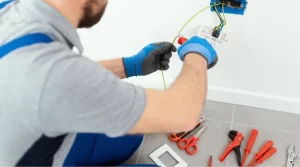A positive home environment plays an essential role in opioid recovery. Research indicates that emotional support and stability can greatly reduce recovery time. Factors such as open communication, organized spaces, and consistent routines foster a nurturing atmosphere. This environment not only aids in adherence to treatment plans but also minimizes relapse triggers. Understanding these dynamics is vital for both individuals and their families. What specific elements contribute to a supportive home, and how can they be implemented effectively?
Key Takeaways
- A supportive home environment fosters emotional encouragement, reducing stress and anxiety during recovery from opioid addiction.
- Open communication within the household builds trust, making individuals feel understood and less isolated in their recovery journey.
- Establishing consistent routines provides structure and stability, which helps individuals adhere to their treatment plans and reduces anxiety levels.
- Minimizing substance use triggers in the home environment lowers the risk of relapse, creating a safer space for recovery.
- Access to healthy food and opportunities for physical activity enhances overall well-being, promoting a positive mindset during the recovery process.
Understanding Opioid Recovery: The Journey Ahead
Understanding opioid recovery is a multifaceted journey that requires both individual commitment and external support. Each person’s path varies; some may take weeks, while others may face months of challenges. The complexity of recovery is influenced by factors such as the severity of addiction, mental health status, and social support systems. Evidence suggests that individuals who engage in structured treatment programs and receive encouragement from loved ones tend to experience shorter recovery times. Additionally, fostering a sense of belonging within supportive communities can enhance motivation and resilience. Ultimately, the question of “How long does opioid recovery take?” remains subjective, as success is not merely about duration but the quality of life and emotional well-being achieved through the process.
The Impact of Home Environment on Recovery Time
A supportive home environment greatly influences the recovery journey for individuals battling opioid addiction. Research indicates that a nurturing and stable atmosphere can greatly reduce recovery time. Factors such as emotional support, open communication, and a safe space contribute to lower levels of stress and anxiety, which are critical during this vulnerable period. Furthermore, a positive home environment fosters motivation and accountability, essential for adhering to treatment plans. In contrast, a chaotic or unsupportive setting can exacerbate triggers and lead to relapse, ultimately prolonging recovery. Understanding how long opioid recovery takes emphasizes the importance of a conducive home atmosphere, highlighting its role as a fundamental component in promoting healing and resilience among those in recovery.
Key Elements of a Positive Home Environment
While various factors contribute to recovery from opioid addiction, several key elements define a positive home environment that can greatly enhance the healing process. A nurturing atmosphere characterized by emotional support fosters open communication among family members, promoting trust and understanding. Stability is another critical element; a consistent routine can provide a sense of security for individuals in recovery. Additionally, a clutter-free and organized living space can minimize stress and distraction, enabling focus on healing. Access to healthy food and opportunities for physical activity also contribute positively, while minimizing triggers related to substance use is essential. Collectively, these elements not only support recovery but also address the question, “How long does opioid recovery take?” by potentially shortening the duration through enhanced well-being.

Strategies to Enhance Your Home for Recovery
Creating an environment conducive to recovery involves implementing specific strategies that enhance the home atmosphere. Key strategies include establishing routines that provide structure and predictability, which can greatly reduce anxiety during the recovery process. Incorporating elements of nature, such as plants or natural light, can foster a calming environment, as studies indicate that such elements contribute positively to mental well-being. Additionally, creating a dedicated space for self-reflection or mindfulness practices can support emotional health. Encouraging open communication within the household promotes a sense of belonging, essential for recovery. Finally, minimizing triggers and fostering supportive relationships can greatly impact how long opioid recovery takes, as a nurturing home plays a vital role in the healing journey.
Real-Life Success Stories: Shortening Recovery Time Through Support
Numerous individuals have experienced markedly shortened recovery times from opioid addiction thanks to the unwavering support of their home environments. Real-life success stories highlight how nurturing atmospheres foster healing and reintegration into society.
- Family members provide emotional encouragement and understanding.
- Friends create a sense of belonging and shared purpose.
- Structured routines help establish stability and accountability.
- Open communication fosters trust and reduces feelings of isolation.
Research indicates that those who benefit from a supportive home environment often find the journey less intimidating. As families rally together, the question “How long does opioid recovery take?” becomes less about duration and more about the strength of communal bonds that facilitate transformative change.
Frequently Asked Questions
What Are the Stages of Opioid Recovery?
The stages of opioid recovery typically include detoxification, stabilization, rehabilitation, and maintenance. Each phase requires support, coping strategies, and potential lifestyle changes, emphasizing the importance of a nurturing environment to foster lasting recovery and connection.
How Does Nutrition Affect Opioid Recovery Time?
Nutrition greatly influences opioid recovery time by providing essential nutrients that support brain health and overall well-being. A balanced diet can enhance mood, reduce cravings, and promote physical healing, ultimately facilitating a more effective recovery process.
Can Pets Help in the Recovery Process?
Research indicates that pets can positively impact recovery by providing companionship, reducing anxiety, and encouraging physical activity. Their presence fosters emotional support, which may contribute to a more conducive environment for healing during opioid recovery.
Is Professional Help Always Necessary for Recovery?
Professional help is often beneficial in recovery, providing guidance and support. However, some individuals may succeed through personal determination and a supportive environment, suggesting that varying approaches can lead to successful outcomes in opioid recovery.
How Can Family Dynamics Influence Recovery Outcomes?
Family dynamics greatly influence recovery outcomes, as supportive interactions foster emotional stability and trust. Conversely, conflict may hinder progress. A nurturing environment can enhance motivation, ultimately impacting the duration of recovery from opioid dependence.
Conclusion
In summary, a positive home environment plays an essential role in expediting opioid recovery. By fostering emotional support, stability, and accountability, individuals are better equipped to navigate the challenges of recovery. Key elements such as open communication, organized spaces, and minimized triggers enhance emotional well-being and adherence to treatment. Evidence suggests that nurturing surroundings not only promote motivation but also encourage lasting change, ultimately shortening recovery time and paving the way for healthier, substance-free lives.
You May Also Like To Read:






